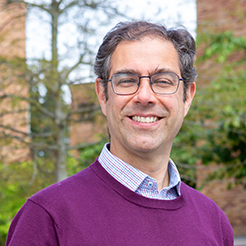Alberto Aliseda
University of Washington
Seminar Information
Engineering Building Unit 2 (EBU2)
Room 479
Seminar Recording Available: Please contact seminar coordinator, Jake Blair at (j1blair@ucsd.edu)

The flow physics of coaxial sprays have been studied extensively due to the fundamental nature of the interactions between the liquid and gas phases and their many applications. The feedback control of sprays requires an intimate understanding of the physics that determine atomization, as well as those that are responsible for the transport of small liquid drops in a turbulent gas jet.
I will review recent experiments where the behaviour of liquid atomization by a high-speed coaxial jet has been observed. The mechanism that dominates spray formation through a cascade of hydrodynamics instabilities (and the resulting population of droplets, radial concentration and velocities) has been characterized. The detailed interactions of spherical droplets in the mid-region of the spray with the carrier flow turbulent jet, which determine spray droplet transport and size and velocity distributions will then be explained.
I will then explore different actuation mechanisms to shape the spray to a desired state, specifically electrostatic forcing, and show experimental implementations of this multiphysics approach to feedback control.
Dr. Aliseda is the PACCAR Professor at the University of Washington in Seattle, WA, USA, where he has been in the faculty since 2006. Since July 2021, he is the Chair of the Department of Mechanical Engineering. He also holds adjunct (courtesy) appointments in Aeronautics and Astronautics and Neurological Surgery. Prior to the UW, he obtained his PhD and did postdoctoral research at the University of California, San Diego. Before his graduate studies at UCSD, he earned a B.Sc./M.Sc. in Aerospace Engineering from the Polytechnic University of Madrid, in 1998. His current interests focus on turbulent and multiphase flows, including flows of interest to energy conversion and environmental problems, such as liquid atomization and cloud microphysics. He also works on biomedical flows, with a special emphasis on the biomechanical basis of cardiovascular disease and the interaction of medical devices with flows in the heart and arteries. He has been a Visiting Professor at the Universidad Carlos 3 de Madrid, the École Normale Supérieure de Lyon, the Laboratoire des Ecoulements Geophysiques et Industriels (LEGI) of the Université Grenoble-Alpes and the École des Mines de Saint-Étienne.
